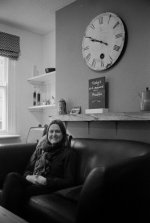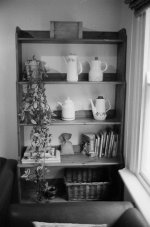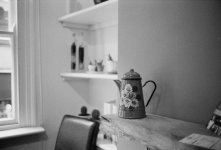Pete B
Well-known
I took some test shots primarily to check focus of a new to me 35mm pre asph, but also to revisit developing and scanning. When I look at members scans on RRF I often see rich blacks and tones. My scans often seem a little lackluster. How do these images seem to you? Are they OK? Is there a problem with development? Is there a scanning issue?
The film is HP5+ @ 250. Incident meter.
D76 1:1 in a large tank (800ml for one film)
20C, 13 mins.
Scanner is Plustek 8100 using Vuescan.
Sorry for the small files.
( Don't worry about the composition, I was checking the focus!!)
I'm grateful for any pointers/tips.
Pete
Photos removed in favour of larger images further down thread!
The film is HP5+ @ 250. Incident meter.
D76 1:1 in a large tank (800ml for one film)
20C, 13 mins.
Scanner is Plustek 8100 using Vuescan.
Sorry for the small files.
( Don't worry about the composition, I was checking the focus!!)
I'm grateful for any pointers/tips.
Pete
Photos removed in favour of larger images further down thread!












